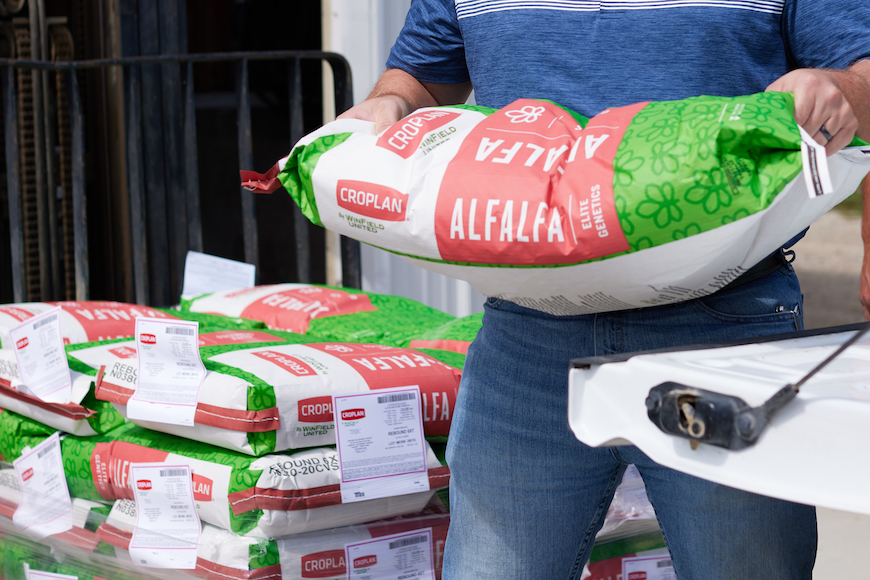Benefits of Year-Round Crop Production Using Diversified Crops

What Is a 360-Degree Approach to Crop Management?
At CROPLAN® seed, we want to support farmers as they diversify their crop portfolio. Our 360-degree crop management approach emphasizes not just crop variety but also the benefits of having a growing crop throughout the year.
When we say “360-degree approach”, we are referring to crop growth as a continuous cycle. This can help you maximize the growing season with various crops that sustain the soil and provide year-round yield opportunities. The CROPLAN seed team continues to invest in research to help farmers optimize diversified crop production with the best seed options and management practice recommendations to support high yield potential.
Crop Diversification Helps Mitigate Risk
Why is crop diversification becoming a hot topic in the farming community? There are several reasons, and they can vary depending on the operation and growing region. Some growers find value in a diversified crop mix to:
Spread Risk: Every growing season presents different challenges and opportunities. By diversifying your crops, you can spread risk across multiple crops throughout the year. This can offer more peace of mind and financial security.Capitalize On Market Opportunities: A diversified crop plan can help you improve profitability potential by capitalizing on unique market opportunities. For example, canola acres have increased significantly in recent years, especially in regions with oil-crushing plants, providing an opportunity for farmers to access new crop marketing opportunities.
Build Soil Health: You’re probably already aware of the benefits of cover crops for soil health. You can take those benefits one step further with a 360-degree approach. Instead of terminating cover crops, you can harvest off-season crops to add revenue. Continuous plant growth helps with nitrogen fixation, especially when adding legumes like alfalfa to the crop mix, enriching the soil for subsequent crops.
Fulfill On-Farm Forage Needs: A diversified crop plan works extremely well for livestock producers. Growing forage crops like alfalfa, triticale and sorghum can offer soil health benefits while supporting on-farm forage needs. This system also provides a prime place for manure applications multiple times throughout the year.
360-Degree Crop Plan In Action
If adding diversified crops to support the 360-degree management approach intrigues you, you may wonder what a successful crop rotation might look like on your farm. While the crops grown will vary depending on your farm goals and region, keep in mind the unique advantages of these forage crops.Alfalfa: Often considered the queen of forages, alfalfa offers nitrogen credits that can benefit the next crop in your rotation. It’s a robust legume that thrives in various soil types and conditions. We recommend rotating at least 25 percent of your alfalfa acres every year and seeding those back to a nitrogen-loving crop like wheat, canola, sunflower, corn or even potatoes. Then, seed a new alfalfa stand where a different crop is being rotated.
Triticale: Triticale is a hybrid of wheat and rye, primarily planted for a winter forage crop. After harvesting corn silage, for example, planting triticale can yield a significant forage harvest in spring before transitioning to other crops.
Forage Sorghum: Ideal for areas requiring drought-resistant options, forage sorghum can be harvested in late summer or early fall, allowing for subsequent planting post-harvest. It offers yield and quality benefits similar or better to corn silage on marginal acres.

This graphic shows diversified crop options for building a year-round forage rotation.
Take the Next Steps
Integrating crops like triticale or alfalfa can provide much-needed forage while enhancing your soil if you're already managing livestock. After your primary cash crop harvest, you can plant these crops, creating a continuous growth and harvest cycle. Row crop producers can find value by adding oil crops like sunflowers or canola or cereal crops, like wheat, to their crop plan. Not all regions will benefit equally from the 360-degree approach. Your growing season, climate, and soil type will influence what works best for your operation.
If you’d like to learn more about diversified crops and how the 360-degree approach could benefit your farm, consult your local agronomic advisor or CROPLAN retailer. They can help tailor a plan based on your specific farm needs and regional conditions.
All photos are either the property of WinField United or used with permission.
© 2024 WinField United. Important: Before use always read and follow label instructions. Crop performance is dependent on several factors many of which are beyond the control of WinField United, including without limitation, soil type, pest pressures, agronomic practices and weather conditions. Growers are encouraged to consider data from multiple locations, over multiple years and to be mindful of how such agronomic conditions could impact results. CROPLAN and WinField are trademarks of WinField United.
IF YOU LOVE OUR INSIGHT, YOU’LL LOVE OUR ROI POTENTIAL
Every successful harvest starts with a seed. It just can't end there. Choose which high-performing seed products you’ll start with this season.






